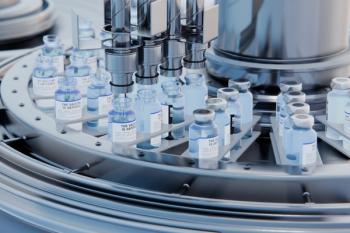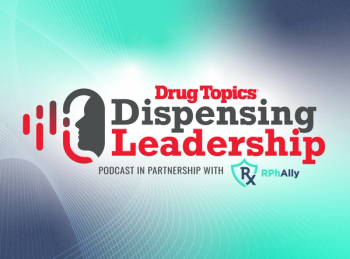
Allergies and asthma: From prevalence to treatment
Currently there are a projected 50 million allergy sufferers and 20 million individuals with asthma in the United States alone, representing a doubling in prevalence for these diseases over the past 20 years. So reported Mike Tringale, director of marketing and communications for the Asthma & Allergy Foundation of America at Schering-Plough's recent media open house in Kenilworth, N.J. The event was titled "Take a Closer Look at Allergies & Asthma."
Clifford W. Bassett, M.D., a diplomate of the American Board of Allergy & Immunology and practicing adult and pediatric allergist/immunologist, presented results of a survey conducted by Roper Public Affairs and Media. The survey, "Impact of Nasal Congestion Among Allergic Rhinitis Sufferers," found that nasal congestion is not only the most bothersome allergy-related symptom but also the one that's most difficult to manage and often associated with triggering a visit to a physician.
Bassett noted that the nonsedating second-generation antihistamines first introduced in the 1980s were a significant addition to the therapeutic armamentarium for allergies because they are associated with 24-hour efficacy, no sedation, and fewer anticholinergic side effects. Cetirizine (Zyrtec, Pfizer), fexofenadine, and desloratadine (Clarinex, Schering-Plough) represent the latest additions to the nonsedating antihistamine class. Of the three, desloratadine has the greatest number of indications, including nonsedating efficacy in both SAR (seasonal allergic rhinitis) and PAR (perennial allergic rhinitis); once-daily, nonsedating efficacy in chronic idiopathic urticaria (CIU); as well as the treatment of SAR in patients with concomitant mild-to-moderate asthma.
Intranasal corticosteroids play a role in reducing nasal congestion through a reduction of inflammation of the nasal mucosa. Intranasal corticosteroids are not associated with rhinitis medicamentosa, which typically is seen with chronic use of over-the-counter (OTC) nasal sprays. Of the currently available intranasal corticosteroids, Schering's Nasonex (mometasone furoate) has several unique indications, including prophylaxis of congestion and SAR nasal allergy symptoms, as well as a pediatric indication for patients two years of age and older.
Eric Schenkel, M.D., the director of the Valley Clinical Research Center in Easton, Pa., said that Nasonex is indicated for the treatment of nasal polyps in patients 18 years of age and older. Nasal polyps are growths within the nasal cavity that can reduce airflow and exacerbate both allergic and asthmatic symptoms. Schenkel also noted that Nasonex has been shown to have no effect on statural growth in children.
Addressing the next topic, persistent asthma, Bassett indicated that proper and continuing treatment of asthma is essential. "Within 12 to 18 months of presenting with asthma symptoms, asthma patients, if not properly treated, may lose airway function," Bassett said. And some of this lost airway function is not reversible.
"We refer to this as airway remodeling by virtue of collagen deposition into the lung," Bassett continued. "It is very important to get anti-inflammatory agents into the lung to prevent complications. We are really adamant about promoting inhaled corticosteroids for persistent asthma." According to Bassett, devices to measure exhaled nitrous oxide are expected to be available in the office setting within the next two years to provide a means of assessing treatment efficacy for persistent asthma and optimizing patient management.
Both Schenkel and Bassett specifically mentioned Schering's Asmanex (mometasone furoate), which was launched in September 2005 as a dry-powder TWISTHALER. With daily (q.d.) dosing, it is indicated for both maintenance treatment and prophylactic therapy of asthma in patients aged 12 years and older. They contend that it is a promising new therapeutic addition with a very favorable side-effect profile.
Preventative asthmatic therapies, as noted by Bassett, represent a significant advance. There is as yet no cure for asthma and current therapies are targeted toward chronic disease management rather than cure. According to Bassett, the preferred step therapy for asthma is as follows: low-dose inhaled corticosteroids in mild, persistent asthma; low- to medium-dose inhaled corticosteroid and long-acting ß2-agonists; high-dose inhaled corticosteroids and long-acting ß2-agonists; and, if needed, corticosteroid tablets or syrup. Alternative therapies include cromolyn, leukotriene modifiers, nedocromil (Tilade, King Pharmaceuticals), and sustained-release theophyllines.
In a follow-up interview to the meeting, John Forbes, R.Ph., a community pharmacist at MediCap pharmacy in Des Moines, commented that he has seen "increased patient satisfaction and a decreased number of ER and hospital visits over the past three to five years" for both allergy and asthma. Physicians are more aware now, he said, and they treat patients with bronchodilators and steroids, preferably inhaled corticosteroids. Forbes has also seen "a large increase in the use of the leukotriene modifiers," for example, montelukast (Singulair, Merck). He feels we have made significant strides in the management of both allergies and asthma, and he looks for further improvements down the road.
THE AUTHOR is a healthcare communications specialist residing in Montville, N.J.
Newsletter
Pharmacy practice is always changing. Stay ahead of the curve with the Drug Topics newsletter and get the latest drug information, industry trends, and patient care tips.




































































































































